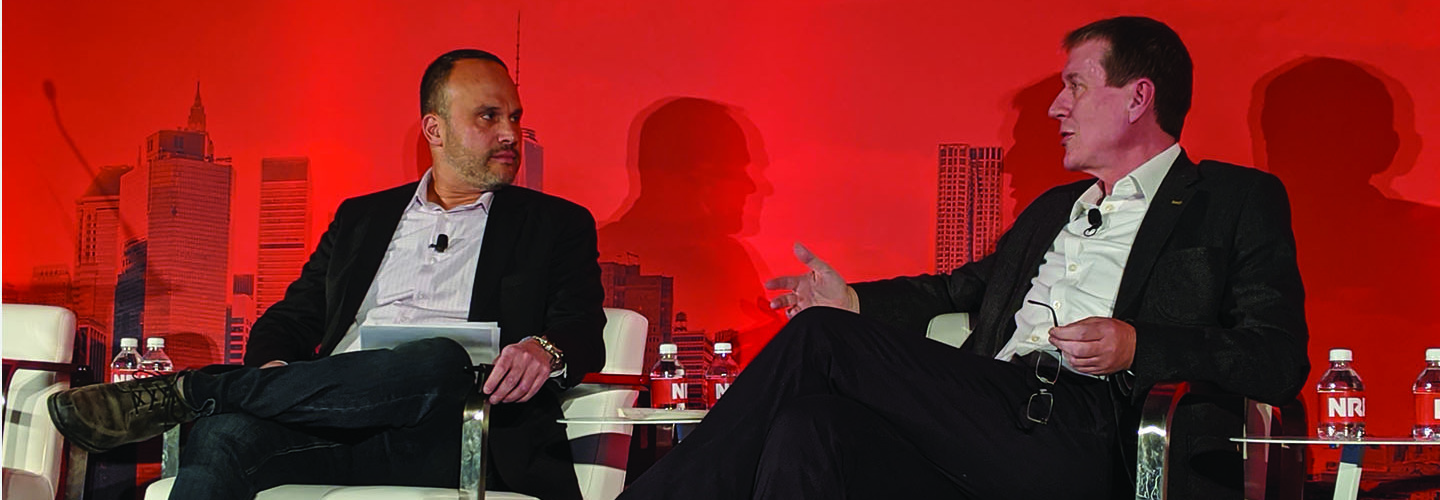NRF 2020: Retail Enters the Second Wave of Digital Disruption
Retailers can’t wait any longer: Those that haven’t begun to deliver digital transformation within their brands must start now, or face punishing consequences soon. This was the sentiment maintained by David Dobson, director of retail, hospitality and consumer goods for Intel, who said the industry is headed toward its “second wave” of digital disruption.
“The first wave of disruption was about how to compete with online,” said Dobson, speaking in New York at NRF 2020 Vision: Retail’s Big Show, the industry’s massive annual gathering. “The next wave is really about the integrated solution,” he said. “It’s not online versus in-store but rather how to deliver value to the customers wherever they want to be. It’s clear that you have to have both, and you have to merge those experiences.”
Dobson, speaking in a session on digital disruption with Andy Szanger, director of corporate sales for CDW, said that, in addition to the growth of online shopping, industry disruption is being driven by three big trends.
- Changing shopper expectations: Consumers’ demands on retailers continue to evolve. Millennials and Generation Z shoppers, in particular “have whole a different perception of how they want to shop,” said What some may find surprising is that younger shoppers, though comfortable with online and mobile shopping, want to have unique in-store experiences as well. “They still want to go out with their friends and have fun,” he said.
- The move to “hypersimplicity”: Even as retailers strive to provide consumers with interesting shopping experiences, consumers continue to demand that retailers make the buying process ever simpler. This has influenced the development of visual search, voice-based purchasing and the move toward convenient payment technologies. Dobson said retailers must ask, “How do you make it just so simple for people to buy from you?”
- Speed vs. sustainability: Retailers are confronted with two opposing demands: the need to get products into stores and consumers’ hands as fast as possible, and the need to do so in a way that is globally sustainable and responsible. They’re achieving that partly with the deployment of smart technologies to optimize their supply chains.
MORE FROM BIZTECH AT NRF: Read how AI is revolutionizing retail.
Retail Digital Disruption Begins with Data
Dobson noted that artificial intelligence is already embedded in most of the technology that retailers are deploying. The value of AI is clear, he said, as retailers are using it to gain a deeper understanding of their customers, optimize pricing and make their supply chains more efficient.
But none of it works without good, clean data.
“The best retailers are very data rich, but all that data tends to be in silos,” Dobson noted. “So, there’s usually a significant exercise that starts with figuring out which of your data is useful to your AI efforts.”
To acquire data on new customers, more retailers are experimenting with in-store digital experiences, especially around digital signage, Dobson said. Once, signs merely delivered; today, they also take information in. In some cases, this is accomplished with cameras that observe how people interact with the signage. In others, the signage may have interactive features that can help shoppers find the right product, help them find their way around the store or help them order or pay for products.
Fast-food restaurants are adopting digital signage quickly, in part because of regulations that require them to provide a substantial amount of information about menu items, such as calories. Such restaurants also are rapidly expanding their use of digital ordering kiosks that allow customer to skip standing in line.
Szanger noted that a large fast-casual chain that CDW worked with recently on such a deployment discovered that customers who used the kiosks placed larger orders — perhaps too embarrassed to do so when talking to an employee.
“They found that customers upsell themselves,” Szanger said.
Keep this page bookmarked for more coverage from the NRF Big Show, and follow us on Twitter at @BizTechMagazine, or the official conference Twitter account, @NRFBigShow, and join the conversation using the hashtag #NRF2020.








